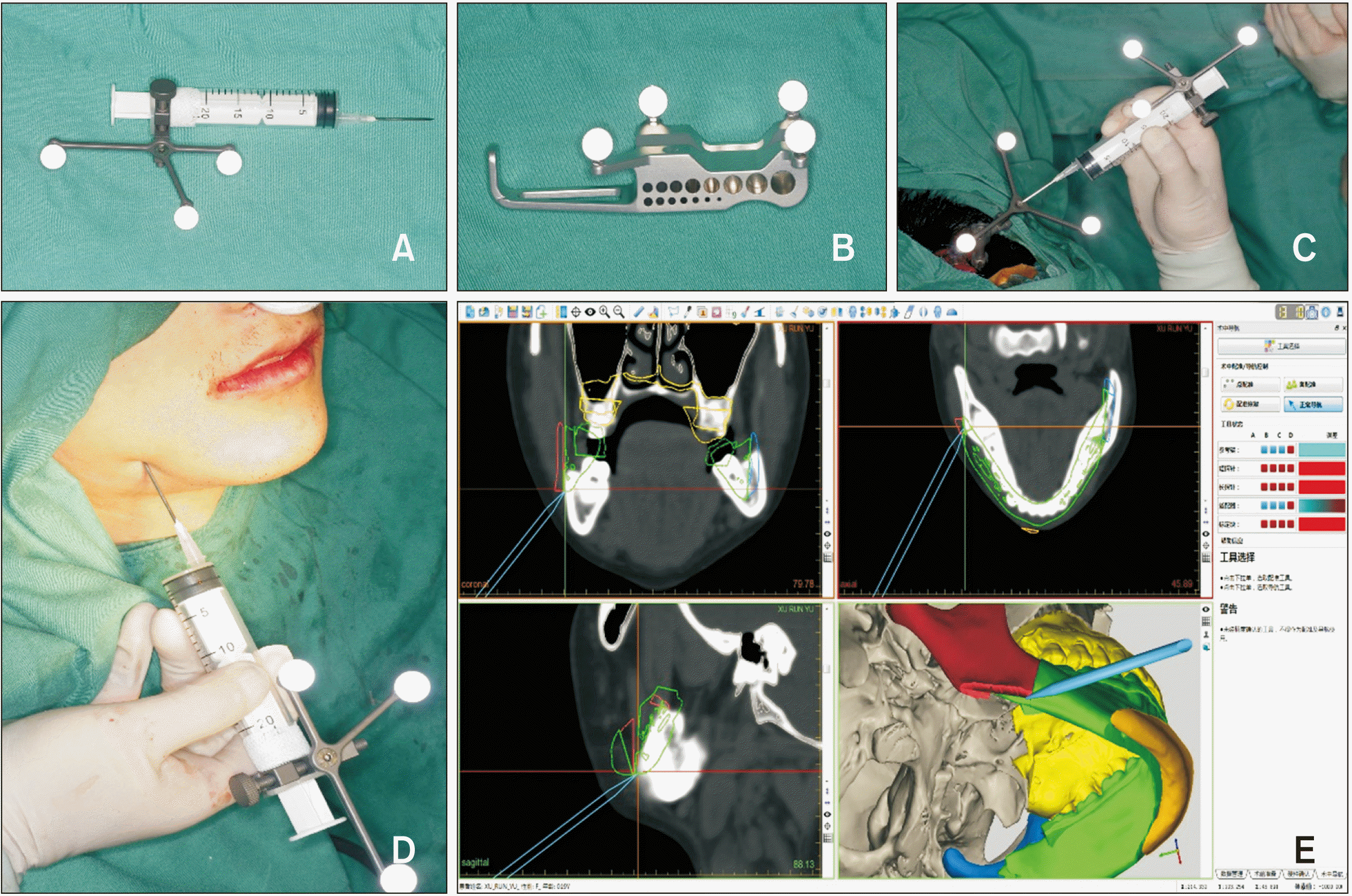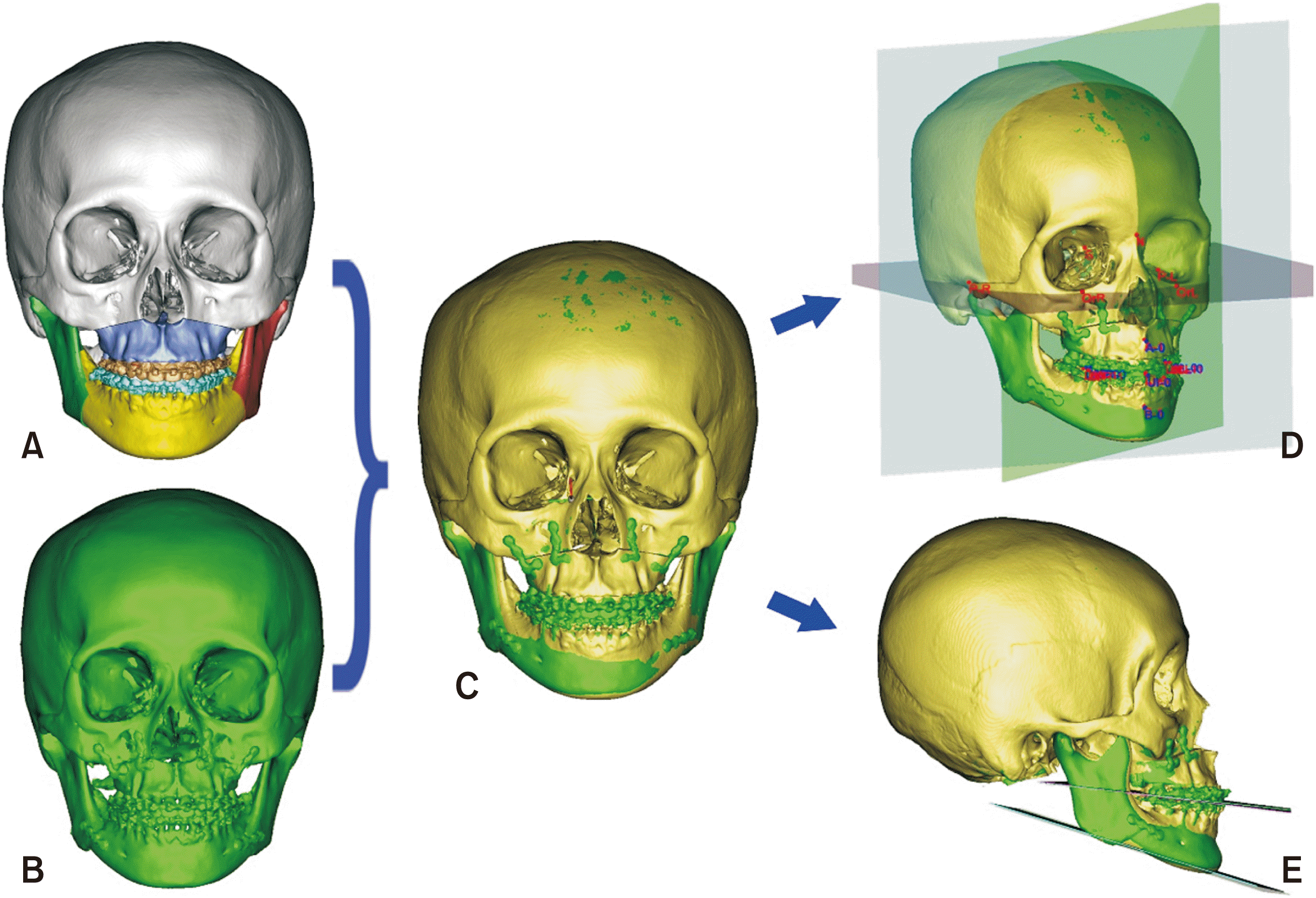1. Xia JJ, Gateno J, Teichgraeber JF, Christensen AM, Lasky RE, Lemoine JJ, et al. 2007; Accuracy of the computer-aided surgical simulation (CASS) system in the treatment of patients with complex craniomaxillofacial deformity: a pilot study. J Oral Maxillofac Surg. 65:248–54. DOI:
10.1016/j.joms.2006.10.005. PMID:
17236929.

2. Xia JJ, Gateno J, Teichgraeber JF. 2009; New clinical protocol to evaluate craniomaxillofacial deformity and plan surgical correction. J Oral Maxillofac Surg. 67:2093–106. DOI:
10.1016/j.joms.2009.04.057. PMID:
19761903. PMCID:
PMC2763487.

3. Hsu SS, Gateno J, Bell RB, Hirsch DL, Markiewicz MR, Teichgraeber JF, et al. 2013; Accuracy of a computer-aided surgical simulation protocol for orthognathic surgery: a prospective multicenter study. J Oral Maxillofac Surg. 71:128–42. DOI:
10.1016/j.joms.2012.03.027. PMID:
22695016. PMCID:
PMC3443525.

5. Sharifi A, Jones R, Ayoub A, Moos K, Walker F, Khambay B, et al. 2008; How accurate is model planning for orthognathic surgery? Int J Oral Maxillofac Surg. 37:1089–93. DOI:
10.1016/j.ijom.2008.06.011. PMID:
18760569.

6. Xia J, Ip HH, Samman N, Wang D, Kot CS, Yeung RW, et al. 2000; Computer-assisted three-dimensional surgical planning and simulation: 3D virtual osteotomy. Int J Oral Maxillofac Surg. 29:11–7. DOI:
10.1016/S0901-5027(00)80116-2. PMID:
10691136.

7. Zinser MJ, Mischkowski RA, Sailer HF, Zöller JE. 2012; Computer-assisted orthognathic surgery: feasibility study using multiple CAD/CAM surgical splints. Oral Surg Oral Med Oral Pathol Oral Radiol. 113:673–87. DOI:
10.1016/j.oooo.2011.11.009. PMID:
22668627.

8. Tran NH, Tantidhnazet S, Raocharernporn S, Kiattavornchareon S, Pairuchvej V, Wongsirichat N. 2018; Accuracy of three-dimensional planning in surgery-first orthognathic surgery: planning versus outcome. J Clin Med Res. 10:429–36. DOI:
10.14740/jocmr3372w. PMID:
29581806. PMCID:
PMC5862091.

9. Zhang N, Liu S, Hu Z, Hu J, Zhu S, Li Y. 2016; Accuracy of virtual surgical planning in two-jaw orthognathic surgery: comparison of planned and actual results. Oral Surg Oral Med Oral Pathol Oral Radiol. 122:143–51. DOI:
10.1016/j.oooo.2016.03.004. PMID:
27209483.

10. Polley JW, Figueroa AA. 2013; Orthognathic positioning system: intraoperative system to transfer virtual surgical plan to operating field during orthognathic surgery. J Oral Maxillofac Surg. 71:911–20. DOI:
10.1016/j.joms.2012.11.004. PMID:
23312847.

11. Li B, Zhang L, Sun H, Yuan J, Shen SG, Wang X. 2013; A novel method of computer aided orthognathic surgery using individual CAD/CAM templates: a combination of osteotomy and repositioning guides. Br J Oral Maxillofac Surg. 51:e239–44. DOI:
10.1016/j.bjoms.2013.03.007. PMID:
23566536.

12. Baumann A, Schicho K, Klug C, Wagner A, Ewers R. 2005; Computer-assisted navigational surgery in oral and maxillofacial surgery. Atlas Oral Maxillofac Surg Clin North Am. 13:41–9. DOI:
10.1016/j.cxom.2004.10.002. PMID:
15820429.

13. Ewers R, Schicho K, Undt G, Wanschitz F, Truppe M, Seemann R, et al. 2005; Basic research and 12 years of clinical experience in computer-assisted navigation technology: a review. Int J Oral Maxillofac Surg. 34:1–8. DOI:
10.1016/j.ijom.2004.03.018. PMID:
15617960.

14. Stokbro K, Aagaard E, Torkov P, Bell RB, Thygesen T. 2014; Virtual planning in orthognathic surgery. Int J Oral Maxillofac Surg. 43:957–65. DOI:
10.1016/j.ijom.2014.03.011. PMID:
24746388.

15. Lin HH, Lo LJ. 2015; Three-dimensional computer-assisted surgical simulation and intraoperative navigation in orthognathic surgery: a literature review. J Formos Med Assoc. 114:300–7. DOI:
10.1016/j.jfma.2015.01.017. PMID:
25744942.
16. Xia JJ, Gateno J, Teichgraeber JF. 2005; Three-dimensional computer-aided surgical simulation for maxillofacial surgery. Atlas Oral Maxillofac Surg Clin North Am. 13:25–39. DOI:
10.1016/j.cxom.2004.10.004. PMID:
15820428.

17. Yu H, Shen SG, Wang X, Zhang L, Zhang S. 2013; The indication and application of computer-assisted navigation in oral and maxillofacial surgery-Shanghai's experience based on 104 cases. J Craniomaxillofac Surg. 41:770–4. DOI:
10.1016/j.jcms.2013.01.016. PMID:
23462802.
18. Sadiq Z, Collyer J, Sneddon K, Walsh S. 2012; Orthognathic treatment of asymmetry: two cases of "waferless" stereotactic maxillary positioning. Br J Oral Maxillofac Surg. 50:e27–9. DOI:
10.1016/j.bjoms.2011.07.016. PMID:
21839556.

19. Tsuji M, Noguchi N, Shigematsu M, Yamashita Y, Ihara K, Shikimori M, et al. 2006; A new navigation system based on cephalograms and dental casts for oral and maxillofacial surgery. Int J Oral Maxillofac Surg. 35:828–36. DOI:
10.1016/j.ijom.2006.02.024. PMID:
16690251.

20. Mazzoni S, Badiali G, Lancellotti L, Babbi L, Bianchi A, Marchetti C. 2010; Simulation-guided navigation: a new approach to improve intraoperative three-dimensional reproducibility during orthognathic surgery. J Craniofac Surg. 21:1698–705. DOI:
10.1097/SCS.0b013e3181f3c6a8. PMID:
21119403.
21. Bell RB. 2011; Computer planning and intraoperative navigation in orthognathic surgery. J Oral Maxillofac Surg. 69:592–605. DOI:
10.1016/j.joms.2009.06.030. PMID:
21353924.

23. Zinser MJ, Mischkowski RA, Dreiseidler T, Thamm OC, Rothamel D, Zöller JE. 2013; Computer-assisted orthognathic surgery: waferless maxillary positioning, versatility, and accuracy of an image-guided visualisation display. Br J Oral Maxillofac Surg. 51:827–33. DOI:
10.1016/j.bjoms.2013.06.014. PMID:
24045105.

24. Han B, Wang X, Li Z, Yi B, Liang C, Wang X. 2018; Hemimandibular hyperplasia correction by simultaneous orthognathic surgery and condylectomy under digital guidance. J Oral Maxillofac Surg. 76:1563.e1–1563.e18. DOI:
10.1016/j.joms.2018.03.006. PMID:
29626447.

25. Sun Y, Luebbers HT, Agbaje JO, Lambrichts I, Politis C. 2014; The accuracy of image-guided navigation for maxillary positioning in bimaxillary surgery. J Craniofac Surg. 25:1095–9. DOI:
10.1097/SCS.0000000000000633. PMID:
24717316.

26. Luebbers HT, Messmer P, Obwegeser JA, Zwahlen RA, Kikinis R, Graetz KW, et al. 2008; Comparison of different registration methods for surgical navigation in cranio-maxillofacial surgery. J Craniomaxillofac Surg. 36:109–16. DOI:
10.1016/j.jcms.2007.09.002. PMID:
18280173.

27. Ong TK, Banks RJ, Hildreth AJ. 2001; Surgical accuracy in Le Fort I maxillary osteotomies. Br J Oral Maxillofac Surg. 39:96–102. DOI:
10.1054/bjom.2000.0577. PMID:
11286442.

28. Xia JJ, Shevchenko L, Gateno J, Teichgraeber JF, Taylor TD, Lasky RE, et al. 2011; Outcome study of computer-aided surgical simulation in the treatment of patients with craniomaxillofacial deformities. J Oral Maxillofac Surg. 69:2014–24. DOI:
10.1016/j.joms.2011.02.018. PMID:
21684451. PMCID:
PMC3119456.

29. Mischkowski RA, Zinser MJ, Kübler AC, Krug B, Seifert U, Zöller JE. 2006; Application of an augmented reality tool for maxillary positioning in orthognathic surgery - a feasibility study. J Craniomaxillofac Surg. 34:478–83. DOI:
10.1016/j.jcms.2006.07.862. PMID:
17157519.

30. Severt TR, Proffit WR. 1997; The prevalence of facial asymmetry in the dentofacial deformities population at the University of North Carolina. Int J Adult Orthodon Orthognath Surg. 12:171–6. PMID:
9511487.








 PDF
PDF Citation
Citation Print
Print




 XML Download
XML Download